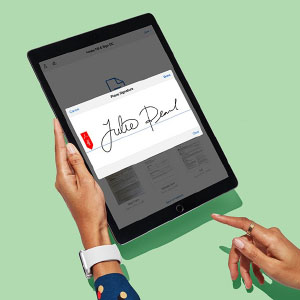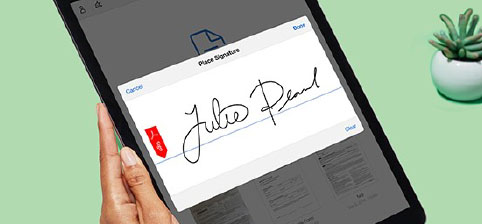With a majority of the workforce moving to telework where possible, innovation and a shift to digital workflows have not only become goals but requirements for successful continuation of day to day operations. Since most individuals are no longer working in a communal office environment, technology implementation is now essential for the creation, management, and transfer of documents to continue without delay. As such, tools for electronic signatures, document creation, and secure sharing or storage are rising quickly and widely within the government sphere.
 From Necessity Blooms Innovation
From Necessity Blooms Innovation
The move to digitize has been ongoing, but major moves have been driven largely by necessity recently. According to a Fed Scoop interview with Jay Bellissimo, General Manager, U.S. Public and Federal Market at IBM, this shift “illustrates the potential to transform government faster than many would have thought possible.” In fact, “because of the urgency around the pandemic, [public sector leaders] have been able to realize benefits in almost real-time — especially those who have implemented technology that allows direct constituent engagement, freeing up employees to address pressing issues,” he says in a new podcast produced by FedScoop and underwritten by IBM (Fedscoop)
Efficient Telework Solutions
When most agencies transitioned to teleworking, the situation presented an immediate need to adopt solutions that addressed the challenges posed, in part, by not having the same direct interaction between employees or with the public. Documents that were normally handed off or placed on desks have to be delivered in another manner, and mail delivery is generally too slow to keep up with today’s demands for quick turnaround. Thus, tools for digital signature and routing became the new norm. These solutions, generally in the form of hosted web applications, can be tailored to fit each agency. Documents can be custom routed, securely signed, and sealed down to prevent tampering.
eSignatures in the State of Utah
One such government entity that has implemented the use of electronic signatures is the state of Utah, as part of the New Workplace Telework Initiative. Lt. Governor Cox is “thrilled to see this teleworking program expand to all state agencies.” He continued in a statement published on the Utah.gov website, “rolling out expanded teleworking as an option for many more state employees means that everyone wins. Employees win. Managers win. Our air wins. Rural wins. The taxpayer wins.” Moving forward, “it is time to see our state workforce transition to this more sustainable, efficient, balanced model.” (Utah.gov)
This existing plan outlining telework practices for agencies within the State of Utah has proved especially helpful in the face of the current pandemic. In a video created by Utah State agencies, Public Safety Bureau Chief DPS Jona Whitesides indicated, “where we have a pandemic it’s been a little bit of a challenge to coordinate, communicate but also maintain social distancing. We’ve had to kind of step outside of the box and say—how can we do this virtually? Part of that has been that eSign really helped us.”
Currently, the State of Utah is “using eSign for what is called an ‘incident action plan,’ basically objectives on what we are going to accomplish in a response to COVID-19,” says Whitesides. (Jona Whitesides, Public Safety Bureau Chief DPS)
Adapting and Moving Forward
As telework practices continue across the United States, other agencies are finding similar ways to implement digital solutions, especially when it comes to document management and electronic signatures, to help both employees and the public complete essential tasks in a productive fashion. (Adobe Sign)
For more information on how Adobe Sign enables federal, state, and local government agencies to improve efficiencies, automate processes, and ensure compliance through a paperless signing experience, check out the on-demand webinars from our Adobe Sign Webinar Series, Embrace Seamless and Secure E-Signature Processes







